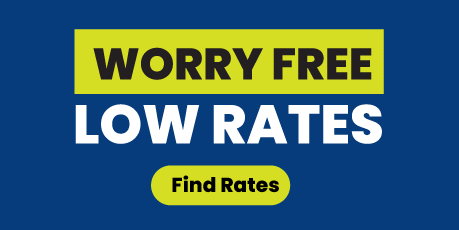What is a Conventional Rate and Term Refinance?


Conventional Rate and Term Refinance Explained
A conventional mortgage that aims to lower the interest rate and or term while refinancing an existing mortgage called a Conventional Rate and Term mortgage refinance.
This is an excellent choice for a homeowner to refinance their current loan and replace it with more favorable terms.
A conventional rate and term refinance will start a new mortgage loan that will replace the current mortgage on the property.
These rate and term mortgage refinances offer homeowners' the ability to lower their interest rate which will lower the monthly payment and or decrease the term of the mortgage from a 30 year loan term to a 25, 20, 15 or even a 10 year mortgage term.
The financial savings from completing a rate and term mortgage refinance will depend on the terms of the existing mortgage compared to the new proposed conventional rate and term mortgage refinance.
Some lenders call this type of mortgage refinance as a "regular" refinance because it offers the opportunity to lower the monthly repayment plan in order to reduce financial pressure while still paying off their loans within a shorter period of time.
A Rate and Term mortgage refinance is available under all major loan programs like Conventional, FHA, VA, Jumbo, and USDA underwriting guidelines.
In most cases a borrower with an average to higher credit score will be rewarded with lower interest rates and fees when using a conventional mortgage loan, compared to the other available loan programs.
What are the reasons to use a rate and term refinance?
Lower the mortgage interest rate:
A homeowner may obtain a lower interest rate on their mortgage compared to the rate they have now on their existing mortgage loan.
When an homeowner's credit rating improves after obtaining the existing mortgage, they may now qualify to capture a lower interest rate mortgage loan compared to the terms of their current mortgage.
If refinancing to lower the interest rate under a conventional mortgage loan program, then borrowers will need to lower their interest rate by an estimated 1.5% compared to their current rate they have on their existing mortgage.
This 1.5% decrease in interest rate will provide a financial savings that will most often offset the closing cost associated with refinancing a mortgage.
For most mortgage lenders, it is important that they verify the net tangible benefit to the borrower to avoid any predatory lending practices.
When to use "Lower Mortgage Interest Rate"?
- Interest Rates on Mortgages have dropped by 1.5% or more
- The borrower's credit score has significantly increased
- The home value has substantially increased
- Borrower has minimum credit score of 620
Each homeowner's circumstances may vary. It is important to have an experienced mortgage professional calculate a comparative analysis that includes a cost benefit summary to verify the financial gains when using this loan product.
Lower the Payment:
Under a conventional mortgage rate and term refinance, homeowners that have paid down their current loan balance for more than 5 years, may be able to decrease their monthly mortgage payment by extending the mortgage term back to a full 30 years.
While this loan option is financially sound for homeowners that need financial relief or have experienced a decrease in monthly income, it is important to understand that this will increase the overall interest the pay on the loan unless the mortgage rate is decreased to some number that decreases the total interest paid over the 30 years.
This may be an option if the homeowner is having difficulty making their payment. Hopefully it will prevent them from going into foreclosure
When to use "Lower the Payment"?
- Interest Rates have decreased
- Interest Rates have not decreased but must lower payment due to financial hardship
- The existing mortgage has been paid for 5 years or more
- Homeowners have no other option to increase income or decrease expenses
- Borrower has minimum credit score of 620
Each homeowner's circumstances may vary. It is important to have an experienced mortgage professional calculate a comparative analysis that includes a cost benefit summary to verify the financial gains when using this loan product.
Decrease the Loan Term:
When a homeowner elects to decrease the term of their mortgage they will most likely decrease the amount of interest they will pay on the loan compared to their current mortgage terms.
If the homeowner chooses to refinance their mortgage loan from a 30 year mortgage to a 15 year mortgage, they will increase their monthly mortgage payment but decrease ethe total amount they will pay on their home loan.
If the homeowner has access expendable monthly income and is willing to pay a higher monthly payment, they can save thousands, maybe even tens of thousands of dollars by the time their mortgage matures.
When to use a "Decrease the Loan Term"?
- The homeowner has access monthly income
- Current mortgage term is a 30 year, 25 year or 20 year term
- Interest rates are the same or lower than current interest rate
- Borrower has minimum credit score of 620
Each homeowner's circumstances may vary. It is important to have an experienced mortgage professional calculate a comparative analysis that includes a cost benefit summary to verify the financial gains when using this loan product.
Convert adjustable rate to fixed rate:
For homeowner's who have elected to take a home loan that has an adjustable interest rate that increases as rates increase, may find sufficient reasons to convert the loan into a fixed rate mortgage to limit their exposure to increased mortgage payments and finance charges.
Fixed rate mortgage loans offer homeowners financial security that their monthly principal and interest payment will not increase.
While adjustable rate mortgage are attractive for homeowners that do not anticipate future rate increase or expect interest rates to decrease, when interest rates rise homeowners will most likely seek to convert their adjustable rate mortgage (ARM) to a fixed rate mortgage loan.
When to use "Convert Adjustable Rate to Fixed Rate"?
- Current loan is an Adjustable Rate Mortgage (ARM)
- Interest Rates are expected to increase
- When the current Adjustable Rate is higher than a fixed rate
- Borrower has minimum credit score of 620
Each homeowner's circumstances may vary. It is important to have an experienced mortgage professional calculate a comparative analysis that includes a cost benefit summary to verify the financial gains when using this loan product.
Change in loan program
The cost associated to mortgage lending charged to the homeowner or homebuyer vary by loan programs. For example, an FHA mortgage loan product has monthly mortgage insurance premium that is charged to the borrower each month.
This mortgage insurance premium is a cost that may be eliminated by refinancing to a rate and term mortgage loan under Fannie Mae and Freddie Mac underwriting guidelines.
While each user case is unique, homeowners should consider the cost savings that is provided by eliminating monthly mortgage insurance premium on the FHA home loan.
When to use a "Change in Loan Program"?
- Current loan is FHA and borrower qualifies for Conventional loans
- Borrower has minimum credit score of 620
- Current interest rates are lower than existing mortgage note rate
- Loan-to-Value is less than 80%
What are the Conventional Rate and Term refinance requirements?
The requirements to refinance for a conventional mortgage rate and term refinance are set forth under Fannie Mae and Freddie Mac underwriting guidelines.
In general, borrowers must demonstrate the ability to repay the loan by verifying 2 years of income, and have a minimum credit score of 620.
There are several factors and determinants that must be met for qualifying for a conventional mortgage loan like, credit score, income, loan-to-value and debt to income.
Credit rating and score:
- Minimum credit score of 620
- No foreclosure in last 7 years
- No Chapter 7 bankruptcy in last 4 years
- No 30 day late mortgage payments in last 12 months
Home equity:
Your home equity is the difference in the amount you owe on all mortgages on the property compared to the current market price of the home. Mortgage lenders refer to the amount of equity you have by using a mathematical ratio called loan-to-value.
Under Conventional underwriting guidelines, borrowers are allowed to borrow up to 95% (LTV) of the value of a primary residence single family home as long as their is no cash-out at closing.
For new loan amounts where the loan amount is greater than 80 percent the value of the home, borrowers can expect to pay private mortgage insurance which will be included into the monthly payment.
For the best possible interest rates, it's recommended that you wait to refinance until your home has 20% or more in equity. Though refinancing with a lower percentage may be an option, there won't be as many benefits associated with this route.
Debt-To-Income Ratio (DTI):
Lenders also consider a homeowner’s debt to income (DTI) when they evaluate a homeowner’s ability to repay the mortgage loan.
Debt to Income (DTI) compares the homeowner’s recurring monthly payments to the amount of gross monthly income they receive.
It is calculated by dividing the homeowner's monthly minimum debt payments by their gross monthly income. A DTI ratio of 50% or lower is typically the required DTI.
How does a Homeowner get a Conventional Rate and Term Refinance?
Once the homeowner has completed their research and have chosen their lender, the next step would be to apply to their lender. The first step in any refinance is to apply with your lender of choice and specify they would like to refinance their rate or term.
After completing the initial mortgage application, the mortgage lender will request the required supporting income documents to verify income eligibility requirements.
Upload Income Documents:
- 1 Month Most Recent Pay-stubs
- Last 2 years IRS Tax Returns or W2's
- US Photo Identification
- Current monthly mortgage statement
- Copy of Homeowners Insurance Policy
Lock in the New Interest Rate:
After the homeowner submits their refinance application, the lender will provide a Loan Estimate that includes an approximation of the fees and costs associated with it. Make sure to keep this document handy as it should be compared to the Closing Disclosure at a later time.
By locking in their mortgage rate, the homeowner may protect themselves against any fluctuating interest rates that may occur between the time of application and closing. Most lenders provide up to 60 days for a locked-in rate.
Doing so allows the homeowner the peace of mind knowing that no matter what changes might arise throughout the duration of their refinance process, at least one part remains secure and constant.
Get an Appraisal
The lender will organize a home appraisal to evaluate the homeowner’s property. This is very important as it ensures the homeowner is not borrowing mor money than their home is worth. Your lender will also schedule an appraisal to determine your home’s value.
Make sure your property is in the best condition possible before the appraiser arrives. The appraiser will make a report in regard to the square footage, condition of the home and the comparable homes in the area.
The homeowner may be able to skip the appraisal requirement, if they choose VA or FHA Streamline.
Review Your Closing Disclosure:
The homeowner will need to review their Closing Disclosure. The lender will provide the Closing Disclosure prior to the actual closing.
The homeowner will need to read through this document and ensure the terms match up with the refinance mortgage you need. This document will also include the principal balance, interest rate, and monthly payment with the new mortgage.
Close On Your Loan:
It's finally time to close on the homeowner’s loan when the underwriting process is complete. After reading through and double-checking all of the conditions listed in their Closing Disclosure, they will need to contact their lender and confirm that they have received it.
Then the lender will arrange a date and time for a closing meeting.
There are a few details needed to take care of at this loan closing. The homeowner will need to bring verification of identity.
The essential document to bring are photo ID, Closing Disclosure, and transfer proof or a cashier's check for closing costs if required.
The Lender will provide an unbiased third party to assist in completing all the paper work required to close the mortgage known as a Title Attorney or Title Escrow Agency that will represent the interest of both the borrowers and the mortgage lender to insure accuracy and integrity.
Conventional Rate Term Loan Summary
The homeowner who chooses a conventional rate and term refinance will now replace their current home loan with a new one.
They may change their interest rate or mortgage term with a conventional rate and term. Conventional rate and term refi's may help them save money over time, lower their monthly payments or pay off their loan faster.
Rate and term refinances are different from cash-out refinances; the latter allows you to take cash from your home equity in exchange for a higher principal.
You must meet your lender’s income, debt and credit score requirements before you qualify for a refinance. Make sure to read and learn the different requirements.
Please read through this information and if you have questions we are here to assist.
Our expert mortgage officers are available to assist with any questions you may have.
Please call us at 1-866-713-9292 or apply online







